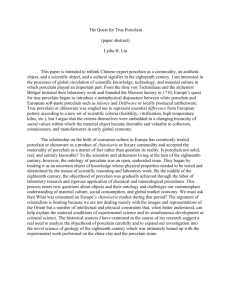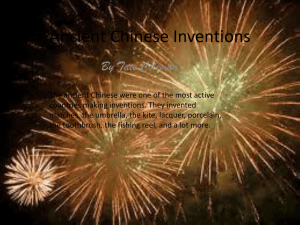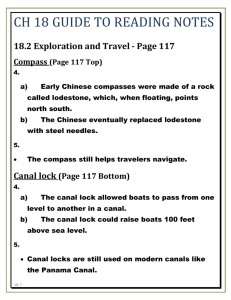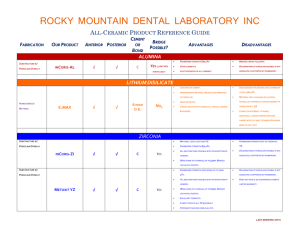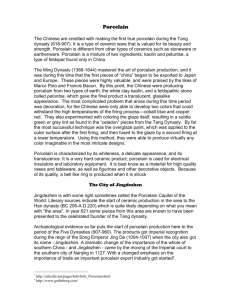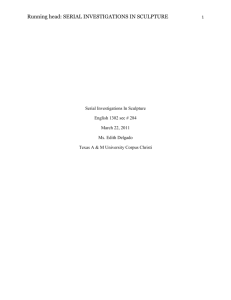JPridham Object Bios
advertisement
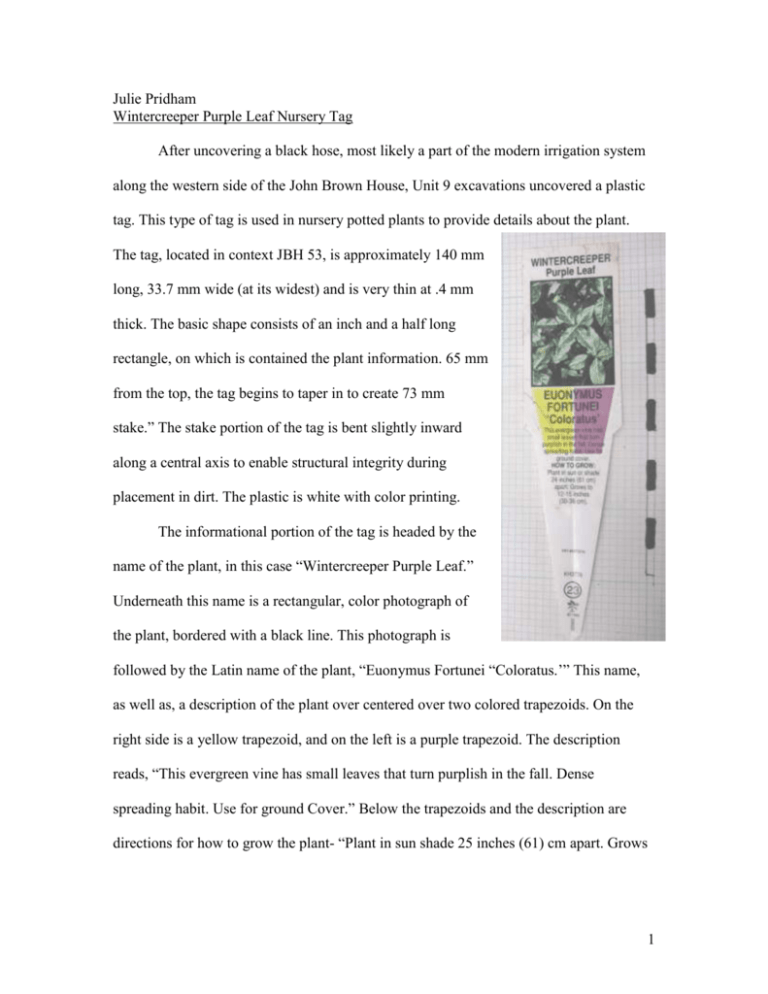
Julie Pridham Wintercreeper Purple Leaf Nursery Tag After uncovering a black hose, most likely a part of the modern irrigation system along the western side of the John Brown House, Unit 9 excavations uncovered a plastic tag. This type of tag is used in nursery potted plants to provide details about the plant. The tag, located in context JBH 53, is approximately 140 mm long, 33.7 mm wide (at its widest) and is very thin at .4 mm thick. The basic shape consists of an inch and a half long rectangle, on which is contained the plant information. 65 mm from the top, the tag begins to taper in to create 73 mm stake.” The stake portion of the tag is bent slightly inward along a central axis to enable structural integrity during placement in dirt. The plastic is white with color printing. The informational portion of the tag is headed by the name of the plant, in this case “Wintercreeper Purple Leaf.” Underneath this name is a rectangular, color photograph of the plant, bordered with a black line. This photograph is followed by the Latin name of the plant, “Euonymus Fortunei “Coloratus.’” This name, as well as, a description of the plant over centered over two colored trapezoids. On the right side is a yellow trapezoid, and on the left is a purple trapezoid. The description reads, “This evergreen vine has small leaves that turn purplish in the fall. Dense spreading habit. Use for ground Cover.” Below the trapezoids and the description are directions for how to grow the plant- “Plant in sun shade 25 inches (61) cm apart. Grows 1 to 12-15 inches (30-36 cm).” The stake also states that the tag was printed in the United States. The tag is easily dated as a result of the information carried on the stake portion. A patent number, PAT #4972616, is listed on the stake, approximately half-way to the point of the stake. The patent was filed on June 18, 1985, listing James Doll of Grand Ledge, MI as the inventor, with The John Henry Company of Lansing, MI as the assignee. The issue date is listed as November 27, 1990. The abstract reads, A plant coding system used by retail establishments includes a plant wall chart color coded according to groups of plants requiring certain amounts of sunlight, cards similarly color coded and located at the display area for plants of a similar variety requiring a predetermined level of light; and plant tags associated with each plant and color coded to correspond to the light required and shown also on the card. (Doll, 1990) This type of tag is frequently used by plant retailers and nurseries to describe and label plants. Though the patent was issued in 1990, the Wintercreeper tag also carries a copyright date of 1993. This copyright date is the TPQ for context JBH 53 (see Unit 9 report by Michael). The tag was found in situ next to the hosing pipe (see figure below). Based on the copyright date on the tag and the modern make of the hosing, it seems most likely that the tag was deposited during backfill from landscape work. This hypothesis is supported by the difference in soil color and composition between the south-eastern section, which contained the tag and hosing, and the remainder of the unit. Though we do 2 not know the exact date range of the landscape work at the John Brown House, we now know that it occurred some time following 1993. The hypothesis of landscape work is also supported by the fact that Wintercreeper, the plant designated on the tag, grows along the entire section between the pergola and the western side of the John Brown House. Hand-painted Chinese Overglaze Porcelain After work on JBH 2009 Unit 9 halted after an encounter with an electrical wire, work began on a new shovel test pit (STP) west of the pergola. STP 3 produced many ceramic artifacts. Among those finds was a large piece of Chinese porcelain. The piece, found along the east wall of STP 3 was located toward the bottom of context JBH 60. The piece is the base of a small bowl, saucer, or cup plate, exhibiting part of the foundation rim. Based off of the small section of foundation rim, the plate was 5 inches in diameter. At its widest, the piece measures 62.6 mm. At its tallest, it measures 36.8 mm. It is possible that instead of a small bowl or saucer, the piece is part of a child’s plate. The porcelain is 3 mm thick, with the section of the foundation rim measuring 8.4 mm. It does exhibit signs of a maker’s mark on the bottom. However, the top section of the piece shows a design with green, purple, and red glazes. 3 The piece is Chinese porcelain because of the high quality of the fabric. The broken edges of the piece reveal a consistently smooth interior fabric, which is also evident on the faces of the artifact. Based on the evenness and strength of the fabric it is most likely hard paste. Hard paste porcelain, typical of Chinese imports and Chinese Imari porcelain, is made by combining white kaolin clay and finely ground feldspathic rock. It is fired at high temperatures of somewhere between 1250 and 1500* (Orser, 464). Though Chinese Imari style was created to imitate Japanese porcelain, the piece from STP 3 is less granular than Japanese import porcelain (Porcelain, Ch Ing Polychrome Overglaze, FLMNH). The piece also exhibits clear signs that it is polychrome overglaze Chinese porcelain. The overglaze technique for porcelain used red, green, pink, purple, yellow and white enamels for hand-painted designs. This particular piece shows green, purple, and red enamels. However, the colors are somewhat faded as areas with glaze have worn down. This wearing can be felt in opposition to the smooth surface. In fact, at the time of excavation, the areas containing the colored enamel held the dirt faster than the rest of the piece. This is typical of overglaze porcelain in which colored enamels are hand painted after the porcelain’s first firing. Generally this means that the enamels become unstable following deposition, and the colors wear off completely in most cases (Orser, 434). The piece from the JBH is therefore very special as it still exhibits most of its colors. This is most likely because the soil in the STP appeared undisturbed at the 4 depth at which the piece was found, in which the piece would not have experienced must distress. Overglaze porcelain was created later than the traditional blue underglaze Chinese porcelain which was the most common import to the colonies. Overglaze porcelain decorations are often floral motifs, which is consistent with this piece. Though the design on the piece is incomplete it is roughly floral, and might perhaps be part of a foliate spray or cornucopia which would be decorating the middle of the dish. Overglaze porcelain with floral motifs was made solely for export trade to Europe and to the colonies. Overglaze porcelain with floral motifs was made solely for export trade to Europe and to the colonies by the late eighteenth century (Hume, 261). While certain types of polychrome overglaze porcelains were made predominately between 1700 and 1750 (Porcelain, Ch Ing Polychrome Overglaze, FLMNH), the export overglaze porcelain was made as early as 1680 and as late as 1850 (Porcelain, Polychrome Chinese Export, FLMNH). This particular piece most likely dates to the mid to late eighteenth century when John Brown was most involved in trade. The piece would have been deposited some time after John Brown and his family moved into the Power Street home in 1788. This seems consistent with the pieces proximity to the glacial soil in STP 3. It is not surprising that such a piece would have been deposited on the John Brown property. Since John Brown was involved with Asian trade and was extremely wealthy for his time, it is reasonable that he would have had such pieces among his collections. Since this type of Chinese porcelain was often used for tea sets, John Brown may have had this as a part of larger set. This is consistent with the size of the plate, which could place it as a saucer for a tea cup. Based on the diameter size alone, the piece 5 could have been a child’s plate. However, given the fact that it is hand-painted Chinese porcelain of very high quality, it seems unlikely that it was a plate specifically for a child. Instead, this set of porcelain would have been used for special occasions, though most likely not as display-only porcelain. Two shards of Green Transfer-Printed Whiteware In addition to the hand-painted Chinese overglaze porcelain, STP 3 recovered two small fragments of green transfer-printed whiteware in context JBH 60. The first shard measures 28.7 mm at its widest and 19.0 mm at its tallest. When measured, the piece was 2.7 mm thick. However, this measurement could be misleading as this piece is heavily chipped, and is missing most of the interior and exterior glazed surfaces. It does, however, still exhibit its original decoration in small sections on either side. What appears to be the convex side (although this could again be misleading based on the cleavage breaks) has a design constructed of parallel lines drawn closely together. It also features what is perhaps a structure drawn with darker green outline and highly massed, light green dots inside. It is difficult to know for certain that this image is a structure, as the correct orientation of the piece is unknown. The pieces concave side features parallel lines more widely spaced. Over this is a floral or foliate design. The rest of the decoration consists of a scalloped lines accented by opaque circles in their centers. The second piece of ceramic appears to be a section of the dish’s bottom. It measures 25.4 mm at its widest and 14.7 mm at its tallest. This piece is not as chipped as 6 the first piece, but still measures 2.7 mm thick. Therefore it is possible that the first piece was in fact 2.7 mm thick in its original state. The second piece does exhibit a small piece of the dish’s foundation rim. However, the section of rim is so small that it is impossible to ascertain the diameter size of the dish. This piece also has printing on both of its sides. The interior face design shows what appears to be the ground with a small leafy plant in the background, drawn with lighter application of the green print. The interior face also features what could be part of an animal, most likely bird. It is possible that the animal is a peacock as indicated by slightly curved design along the body with curved lines inside (presumably imitating feathers) which also feature an opaque dot within each curve. The exterior of the second piece shows a small part of a maker’s mark. This mark consists of some curved feature or object topped by a rounded crown, similar in style to the royal crown of England. Behind the curved feature and the crown is a sprig of a leafy vine. Since the maker’s mark is mostly incomplete, and both vines and rounded crowns are common images on maker’s marks, it is difficult to discern the specific maker. Whiteware was first developed in 1810 in England. The fabric is harder than pearlware and is often closer to true white than pearlware because it covered in colorless glaze. Whiteware was extremely popular in the Unite States as it often mimicked designs of Chinese porcelains but was produced and sold at lower costs. Whiteware ceramics which feature green transfer print were produced 7 between 1829 and 1850, with their maximum popularity ranging from 1829 to 1839. The ceramic median is 1840. Transfer-printing was invented by the potters in Staffordshire, England. Transfer-printing was done by engraving a design onto a copper plate which would then be inked with pigment and printed onto a piece of paper. This paper would then be fitted by skilled potters to the dish. Designs would feature lines and dots to make up the scenes. Another form of transfer-printing could be achieved without the paper, however, this type of transferware does not often exhibit lines. Therefore, the pieces from STP 3 were most likely constructed using the paper template. Transfer-printed whiteware used an underglaze technique, which would have been covered with a lead glaze (Stelle 2001). As whiteware replaced pearlware for more casual table wares, the transfer-printed whiteware from the John Brown property was probably used for non-formal table settings. Instead, items such as the hand-painted Chinese porcelain would have been reserved for special occasions. The whiteware could have been used for more day to day dining activities. 8 Works Cited Ceramic Type Collection: Florida Museum of Natural History Online (FLMNH Online) <ww.flmnh.ufl.edu/histarch/galler_types/tyep_index_display> Accessed December 13, 2009. Doll, James. “Plant coding system.” Patent 4, 972, 616. November 27, 1990. Orser, Charles I. Encyclopedia of Historical Archaeology. Routledge, New York, 2002. pg. 434. Hume, Ivor. A Guide to Artifacts of Colonial America. Philadelphia: University of Pennsylvania Press, 1986. pg. 261. Stelle, Lenville. 2001. An Archaeological Guide to Historic Artifacts of Central Illinois. Parkland College <http://virtual.parkland.edu/lstelle1/len/archguide/documents/ arcguide.htm.> Accessed December 13, 2009. 9

